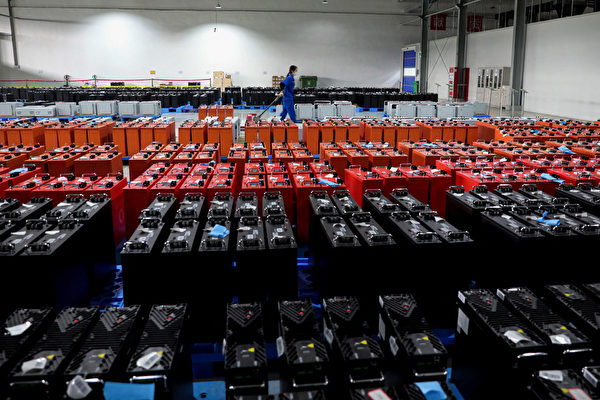As the demand for electricity and batteries continues to rise, some developed countries are continuously developing new lithium batteries or other types of batteries. However, these batteries are often priced high, making it difficult for people in low-income countries to afford them. Recently, a university in Sweden has developed cheap and rechargeable zinc batteries that can be charged and discharged thousands of times, potentially addressing the shortcomings of lithium batteries.
In the manufacturing process of lithium batteries, not only expensive metals like lithium and cobalt are required, but also a large amount of water and energy is needed. Additionally, significant water and energy are required for the recycling process. Scientists are exploring the use of abundant and low-cost metals such as sodium (Na), potassium (K), magnesium (Mg), calcium (Ca), and zinc (Zn) to replace lithium batteries.
Zinc has the advantages of being rich in content, low in cost, low in toxicity, high theoretical capacity (820mAh/g), and high recyclability. Moreover, its low oxidation-reduction potential allows rechargeable zinc batteries (ZnB) to work in non-flammable aqueous electrolytes, attracting attention from researchers and industry alike.
Although zinc metal batteries have the potential to become the next-generation energy storage solution due to their cost-effectiveness and safety advantages, challenges such as hydrogen evolution reaction (HER) and zinc dendrite growth affecting the cycling stability hinder their commercialization possibilities.
Zinc dendrite growth can reduce the cycling performance of batteries, shorten their lifespan, and even pierce through separators, leading to safety issues such as short circuits and explosions. Therefore, measures need to be taken to restrict these issues. Previously, scientists used highly concentrated electrolytes (WiSE) to reduce zinc dendrite growth, but the materials used, such as fluorides, were not only expensive but also had adverse environmental impacts.
Therefore, the development of highly concentrated electrolytes that do not contain or reduce fluorides is crucial. Researchers from Linköping University, Karlstad University, and Chalmers University in Sweden have collaborated to develop a special concentrated electrolyte based on zinc and lignin (mostly found in bark and wood), creating stable and rechargeable zinc batteries.
They added a highly water-absorbent polymer, potassium polyacrylate (PAAK), to WiSE, transforming it into a polymer-containing concentrated electrolyte (WiPSE). This WiPSE variant, when coupled with wood lignin to form an organic electrode (cathode), zinc (anode), and WiPSE electrolyte assembly, showed a battery capacity of 75 mAh/g and a battery potential of 1.3 V. Testing revealed that even after 8000 cycles of charging and discharging at high current (1A/g), the battery could still retain 80% of its initial capacity.
This newly developed zinc battery, resembling a CR2032 button cell battery, provides a stable power supply. After over 8000 cycles of charging and discharging, it maintains good performance, offering a cheap and sustainable battery solution for some low-income countries. This research was published in the journal “Energy & Environmental Materials” in May.
Researchers noted that choosing zinc and lignin for this study was not only convenient and cost-effective but also highly recyclable. In addition, the energy density of this battery is comparable to lead-acid batteries commonly used in low-income countries, without the toxic lead content.
While the laboratory-developed batteries are currently small in size, researchers believe that larger batteries comparable to automotive batteries can be manufactured in the future, pending large-scale production by companies.
Professor Reverant Crispin from Linköping University’s Laboratory of Organic Electronics stated, “Although solar panels have become relatively inexpensive and have been adopted by many in low-income countries, countries near the equator face early sunsets, resulting in power outages for their households and businesses. We hope that this battery technology can provide a solution, despite its lower performance compared to expensive lithium batteries.”
Ziyauddin Khan, a researcher at the Organic Electronics Laboratory, added, “Both zinc and lignin are very cheap, and batteries are easily recyclable. When considering the cost per cycle of usage, it will be an extremely cheap option compared to lithium-ion batteries.”
He explained, “While lithium batteries have many benefits, they pose risks of explosion and challenges during recycling. Extracting specific elements such as cobalt in factories leads to environmental pollution and human rights issues. Therefore, our rechargeable batteries have the potential to be a promising alternative.”

